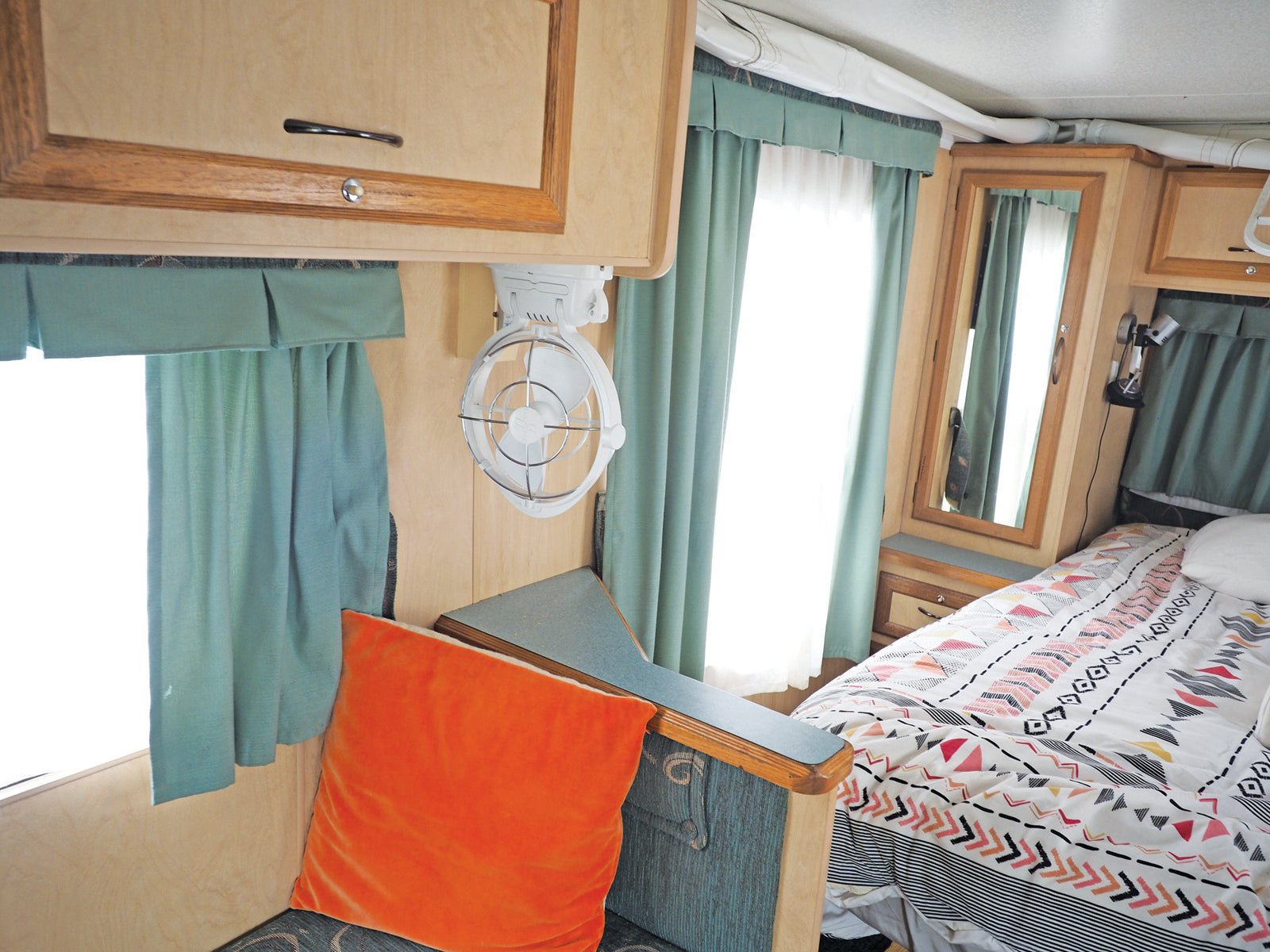A Fan in a Van

Before our recent trip to Queensland, my wife Heather suggested I install a fan in our van. We were planning some off-grid stays so the air conditioner was out of the question — well, at least without a generator and we didn’t want the noise.
Most contemporary vans have a Sirocco fan as the go-to choice, so I purchased one for $199 from a local caravan yard where the brand was the only choice.
The advantage of the Sirocco is that it's versatile to mount and has a wide degree of articulation to direct airflow. I hoped it would be easy to install, and this proved to be the case.
With only one fan in mind, I thought the best location would be opposite the dining table with the ability for it to swivel around towards the bed when needed.
After deciding on a suitable location on a rear cupboard's timber base, I checked there was room for the fan to swing through its full arc. The fan, which is protected by a wire cage, flips over to direct air forward or backwards and pivots 180 degrees from side to side.
Installation was pretty straightforward with suitable 12V wiring in the van running lights and a couple of 12V cigarette sockets for charging various equipment.
To make sure it was out of the way when moving past, I found it was best to mount it upside down. Even in this position the switches for on/off and fan speed were easy to reach. The fans base plate screws into position and the body of the fan then screws to the base.
With the Sirocco firmly mounted, I drilled a hole in the cupboard base to run the power supply lead to the nearest light, only 400mm away and also conveniently mounted under the overhead cupboard.
My plan was to run a lead to power the fan from a 12V light that was suitably fused at the main board. As all the lights in my van are all 12V, I knew there was no conflict with any 240V power, but I double-checked before cutting into the power supply and soldering the fan leads into the light’s supply. It will be evident by the wires’ size that it is 240V but have the van checked by a qualified electrician if in any doubt.
From there, a hole was drilled through the cupboard, and a wire was led to the nearest 12V light fitting where the wires were joined and soldered. Some hot glue gave the wires a final tidy, and the fan tested perfectly.
We’re happy with the result. The fan is quiet enough to run at night at low speed and the higher setting, while noisier, circulates plenty of fresh air if it's sweltering.







